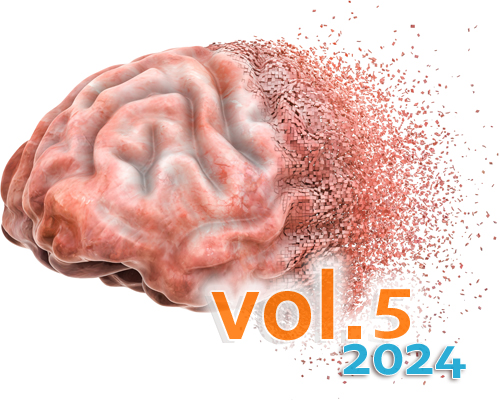Neuropathology and epilepsy surgery – 2024 update
DOI:
https://doi.org/10.17879/freeneuropathology-2024-5347Keywords:
Brain, Histopathology, Seizure, Hippocampus, Neocortex, Dysplasia, TumorAbstract
Neuropathology-based studies in neurosurgically resected brain tissue obtained from carefully examined patients with focal epilepsies remain a treasure box for excellent insights into human neuroscience, including avenues to better understand the neurobiology of human brain organization and neuronal hyperexcitability at the cellular level including glio-neuronal interaction. It also allows to translate results from animal models in order to develop personalized treatment strategies in the near future. A nice example of this is the discovery of a new disease entity in 2017, termed mild malformation of cortical development with oligodendroglial hyperplasia in epilepsy or MOGHE, in the frontal lobe of young children with intractable seizures. In 2021, a brain somatic missense mutation of the galactose transporter SLC35A2 leading to altered glycosylation of lipoproteins in the Golgi apparatus was detected in 50 % of MOGHE samples. In 2023, the first clinical trial evaluated galactose supplementation in patients with histopathologically confirmed MOGHE carrying brain somatic SLC35A2 mutations that were not seizure free after surgery. The promising results of this pilot trial are an example of personalized medicine in the arena of epileptology. Besides this, neuropathological studies of epilepsy samples have revealed many other fascinating results for the main disease categories in focal epilepsies, such as the first deep-learning based classifier for Focal Cortical Dysplasia, or the genomic landscape of cortical malformations showing new candidate genes such as PTPN11, which is associated with ganglioglioma and adverse clinical outcome. This update will also ask why common pathogenic variants accumulate in certain brain regions, e.g., MTOR in the frontal lobe, and BRAF in the temporal lobe. Finally, I will highlight the ongoing discussion addressing commonalities between temporal lobe epilepsy and Alzheimer's disease, the impact of adult neurogenesis and gliogenesis for the initiation and progression of temporal lobe seizures in the human brain as well as the immunopathogenesis of glutamic acid decarboxylase antibody associated temporal lobe epilepsy as a meaningful disease entity. This review will update the reader on some of these fascinating publications from 2022 and 2023 which were selected carefully, yet subjectively, by the author.
Metrics
Published
How to Cite
Issue
Section
License
Copyright (c) 2024 Ingmar Blümcke

This work is licensed under a Creative Commons Attribution 4.0 International License.
Papers are published open access under the Creative Commons BY 4.0 license. This license lets others distribute, remix, adapt, and build upon your work, even commercially, as long as they credit you for the original creation. Data included in the article are made available under the CC0 1.0 Public Domain Dedication waiver, unless otherwise stated, meaning that all copyrights are waived.


















